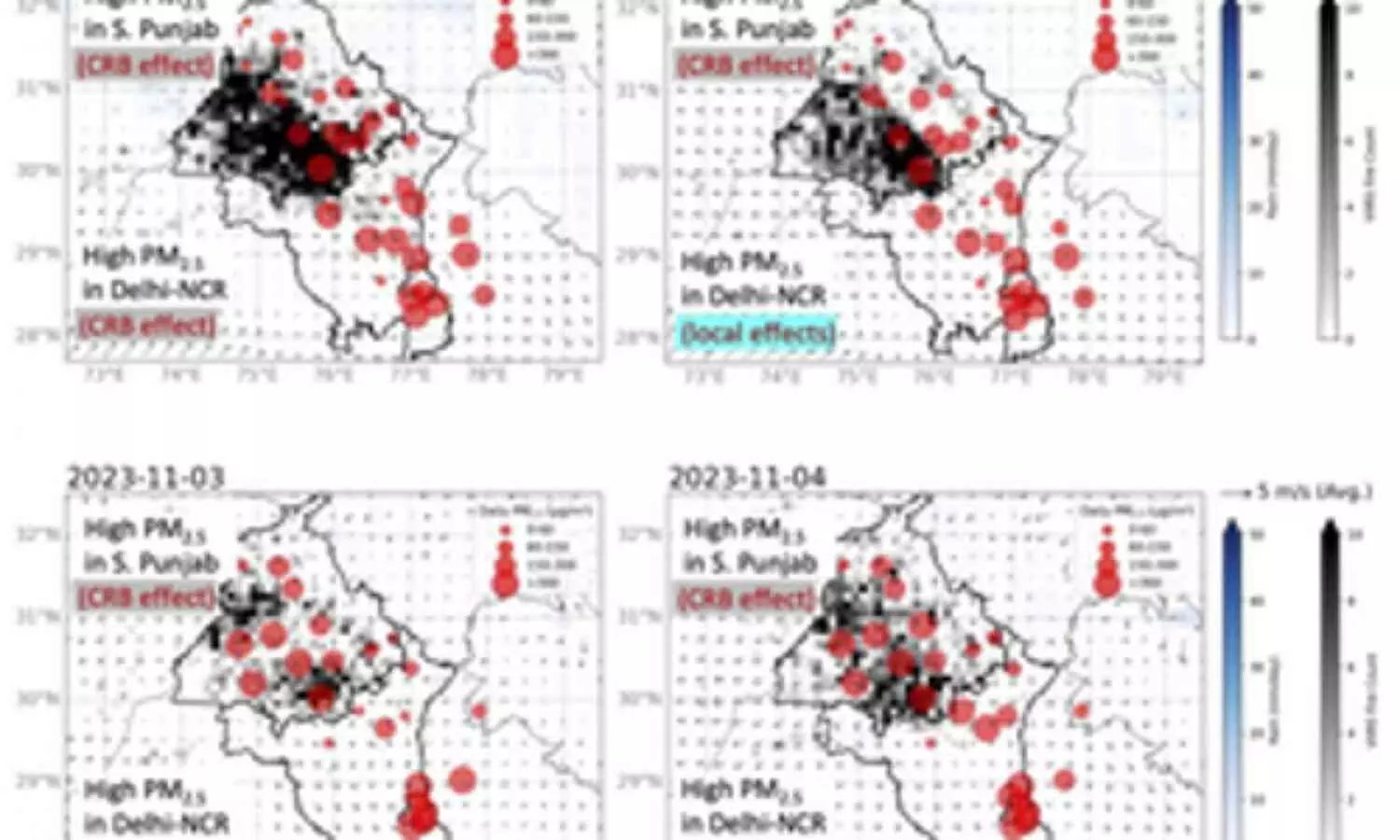Crop Burning in Punjab, Haryana Not Main Cause of Delhi-NCR’s Air Pollution: Study

New Delhi: New research by Japanese scientists has challenged the long-held belief that crop residue burning (CRB) in Punjab and Haryana is the primary driver of severe air pollution in Delhi-NCR. The study, conducted under the Aakash Project by researchers from the Research Institute for Humanity and Nature (RIHN), Kyoto, suggests that local pollution sources play a dominant role in deteriorating air quality in the national capital region, even during the peak stubble-burning season.
Published in the journal NPJ Climate and Atmospheric Science, the study analyzed data collected from a network of 30 monitoring sites across Punjab, Haryana, and Delhi-NCR in 2022 and 2023. Researchers employed multiple methodologies, including real-time air quality monitoring, satellite fire count data, meteorological analysis, and chemistry-transport simulations, to determine the sources of PM2.5 pollution in the region.
Despite a sharp reduction in fire counts detected via satellite imagery over Punjab and Haryana from 2015 to 2023, PM2.5 concentrations in Delhi have remained alarmingly high. The study found significant day-to-day fluctuations in air pollution levels across different sites in both years, indicating that multiple factors influence pollution trends.
During the peak stubble-burning period of November 1-12 in 2022 and 2023, researchers noted stark differences in meteorological conditions. In November 2022, northwesterly winds facilitated the transport of pollutants from Punjab and Haryana to Delhi-NCR on two occasions. However, in November 2023, a prevailing southwesterly wind pattern and low air movement led to the accumulation of locally generated pollutants, contributing to sustained poor air quality in the region.
“The buildup and persistence of PM2.5 pollution in Delhi-NCR are largely of local origin. This is evident from the correlation between air quality fluctuations and the implementation or revocation of the Graded Response Action Plan (GRAP) by the Commission for Air Quality Management (CAQM),” said lead author Dr. Poonam Mangaraj to IANS.
According to the study, the continuous monitoring of pollution levels at the 30 sites allowed researchers to distinguish the contributions of paddy straw burning from other sources. The findings suggest that while CRB does contribute to pollution, it is not the primary factor determining air quality in Delhi-NCR.
“We have conclusively found that CRB in Punjab and Haryana cannot be solely blamed for Delhi’s poor air quality, even during the peak burning season,” stated the researchers to IANS.
Project leader Prof. Prabir Patra, who is also a principal scientist at the Japan Agency for Marine-Earth Science and Technology (JAMSTEC), emphasized the importance of localized mitigation measures. “With our extensive monitoring network, we can now isolate pollution events and identify how paddy straw burning influences Delhi’s PM2.5 levels in comparison to other sources,” he said.
The study highlights the need for region-specific mitigation strategies that go beyond targeting stubble burning. Instead, a more comprehensive approach, addressing local emissions from industries, vehicular pollution, and construction activities, could prove more effective in curbing the persistent air pollution crisis in Delhi-NCR.


